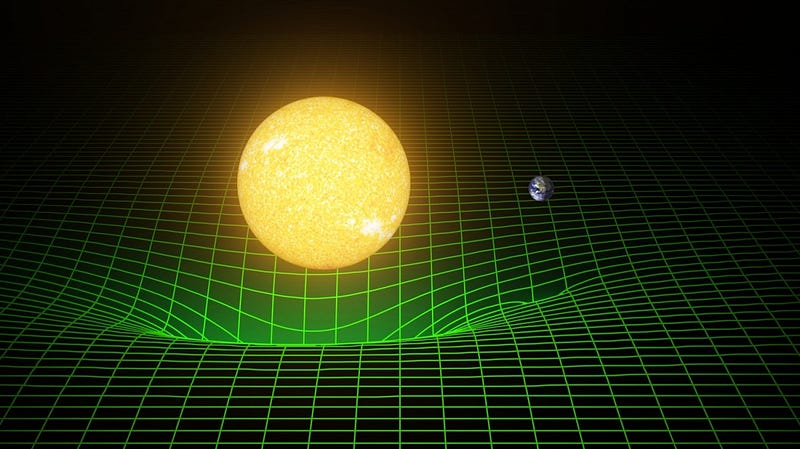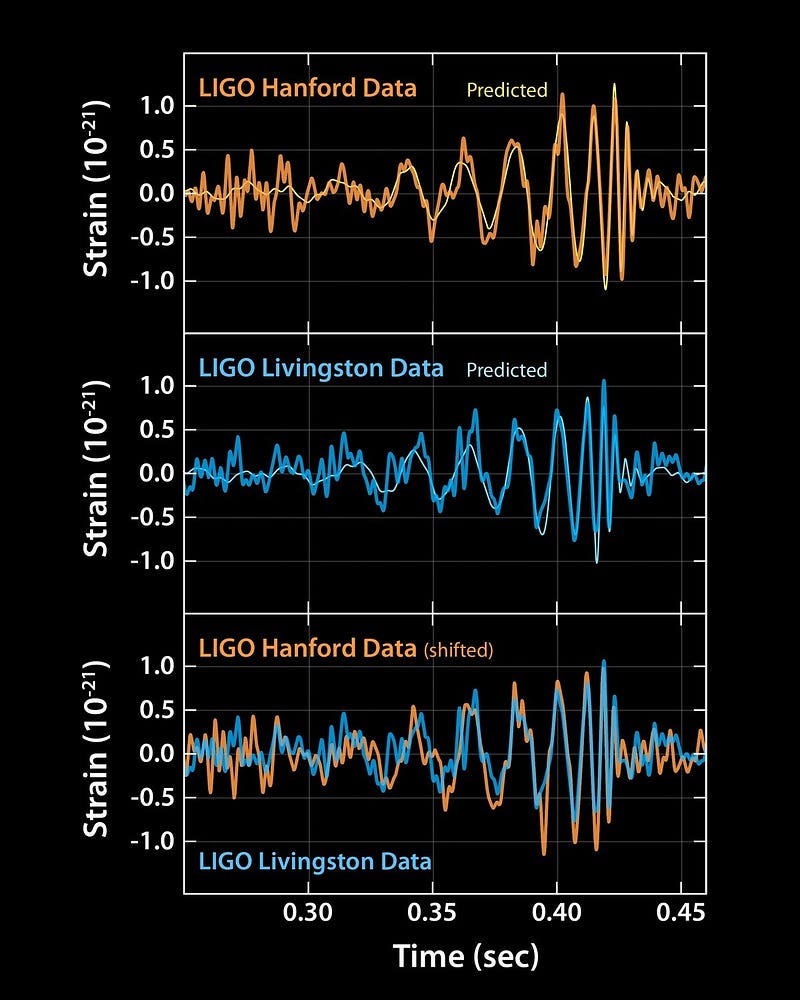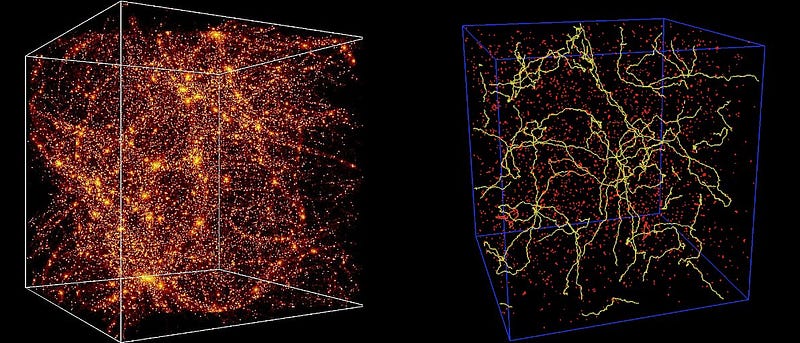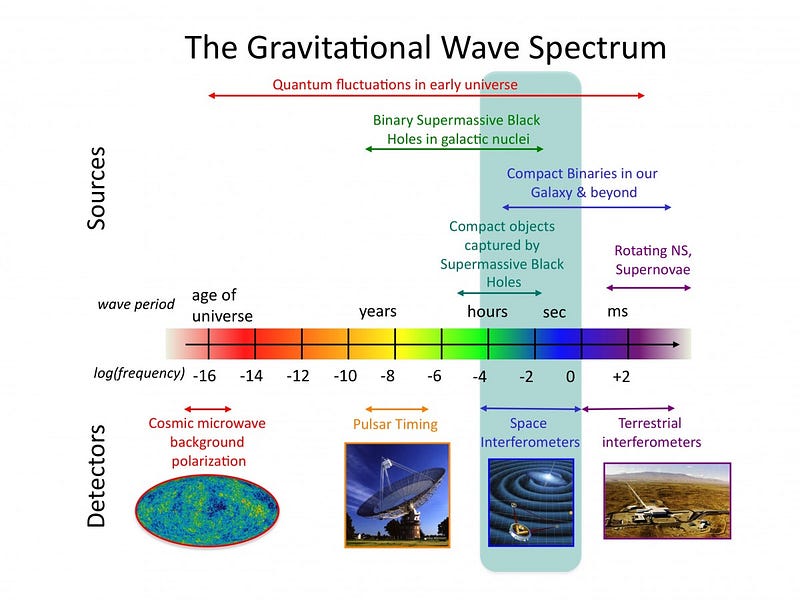Can LIGO Test Quantum Gravity?

Now that it’s seen gravitational waves, could physics beyond Einstein be its next target?
This post is written by Sabine Hossenfelder, a theoretical physicist specialized in quantum gravity & high energy physics. She also freelance writes about science.
“There was a long history of speculation that in quantum gravity, unlike Einstein’s classical theory, it might be possible for the topology of spacetime to change.” –Edward Witten
Tl;dr: Unlikely, but not impossible.
Einstein’s theory of general relativity predicts that accelerating masses emit gravitational waves. And last week, a century after this prediction was made, the LIGO collaboration announced their first direct detection of gravitational waves. But this was only the beginning — we expect many more events, and these will put Einstein’s theory to the test with unprecedented accuracy. What, if anything, does this mean for physicists’ efforts to find a theory of quantum gravity — the still missing combination of general relativity with quantum mechanics?

General relativity is an unquantized theory, and gravitational waves have been predicted independently of attempts to find a consistent quantized version of gravity. The existence of gravitational waves thus can be explained without quantum gravity. It is generally expected, however, that quantum gravity gives rise to “gravitons” that are quantized gravitational waves. The graviton is a particle which is related to gravitational waves the same way that a photon is related to electromagnetic waves — the particle is a tiny chunk of the wave with an energy proportional to the wave’s frequency. The properties of the waves themselves in the context of general relativity give us all sorts of useful information about the quantum version of the graviton particle: it must be massless, it must have a spin of 2 (as opposed to 1 for photons, ½ for electrons and 0 for the Higgs boson), and it must propagate at the speed of light.
A gravitational wave consists of a huge number of gravitons, but measuring the individual constituents is extremely difficult and well beyond our experimental capabilities. LIGO doesn’t resolve single gravitons for the same reason a TV antenna doesn’t resolve single photons: if there is a signal, the detector is swamped with particles and not sensitive to the tiny, discrete steps in energy. If gravitons exist, LIGO detects them, but it cannot distinguish the huge amount of gravitons from an unquantized gravitational wave. Therefore, LIGO cannot tell us anything about the existence of gravitons.
As to whether it can tell us something about quantum gravity, I can’t tell you with certainty, because we don’t have a theory of quantum gravity. So the answer to this question depends on what you believe we know about quantum gravity.
What pretty much everybody agrees on is that quantum gravitational effects should become large in regions of strong space-time curvature. But in the quantum gravity community, “strong curvature” means the curvature towards the center of black holes, not the curvature at the horizon, which is comparably weak. A black hole merger, like the one seen by LIGO, does not probe what happens in the black hole’s center, and therefore it does not test strong quantum gravitational effects.

It has been argued on theoretical grounds however, that quantum gravitational effects might not be small close by black hole horizons, though such arguments are under much debate. Ideas like black hole fuzzballs, firewalls, or black hole hair affect the black hole horizon. And in such scenarios the quantum gravitational fluctuations could leave an imprint on the emission spectrum which can be looked for with LIGO and other upcoming gravitational wave experiments.
In a brief note on the arXiv last week, Steve Giddings from UC Santa Barbara offers some general considerations on this question. He argues that horizon-sized deviations from the regular black hole geometry should generically lead to a gravitational wave signal less regular and with a higher power than General Relativity predicts. I am sure quantitative predictions will follow soon, now that the data is coming in.
More generally, any deviation from General Relativity could give us a hint for how to quantize gravity. And since gravitational waves test grounds that we previously simply couldn’t access, the measurements hold the promise of revealing new facts that will lead to new insights.
The dynamics of a black hole merger and the way gravitational waves travel is sensitive to even smallest deviations from general relativity, like for example violations of the equivalence principle or the possibility that the graviton is not exactly massless. Bimetric gravity, higher-order modifications of general relativity, additional long-range interactions, or the gravitational aether — all these models will have to pass additional tests now. Undoubtedly, some will be winners (most likely where the disagreements from relativity’s predictions are too small to rule out), and some will be losers. And maybe one of them will turn out to supersede Einstein’s masterwork.
Aside from black hole mergers, LIGO might detect signals from strange sources that don’t fit within the standard theories, for example cosmic strings. Cosmic strings are stable, macroscopic, one-dimensional objects of high energy density that might have been created in the early universe and could still be around today.

These cosmic strings can form cusps where they either intersect or loop back onto themselves, which causes them to emit bursts of gravitational waves. If these objects are around today, this would tell us that the conditions in the early universe conditions must have allowed their formation — it would thus test a regime of very high energy where the physics of quantum gravity or grand unification played a role. Cosmic strings, thus, can hold information about fundamental questions in physics. LIGO has previously searched for cosmic strings, and didn’t find any evidence for their presence. But the increased sensitivity after last year’s update now allows us a more precise search for these objects.

Finally it should be mentioned that the LIGO gravitational wave interferometer measures only a specific range of wavelengths, and that other wavelengths contain other information about the structures in the universe. Especially interesting for quantum gravity are the primordial gravitational waves that were around already in the early universe. These should once have had a distinctly quantum behavior and thus detecting them would go a long way to understanding what was going on back then. As the 2014 BICEP2 announcement-followed-by-recantation demonstrated, however , measuring primordial gravitational waves is really hard. But it’s early days in gravitational wave astronomy, and you can rest assured we’ll try harder and have better data in the coming years.
In summary, there are no strong reasons why quantum gravitational effects should become measurable with gravitational wave detectors in the near future. There is, however, always the possibility that new observational methods will bring surprises. So don’t get your hopes up too high — but don’t keep them from flying either.
See here for the complete set of “Dear Dr B” columns, written on Sabine’s blog.
This post first appeared at Forbes. Leave your comments on our forum, check out our first book: Beyond The Galaxy, and support our Patreon campaign!





